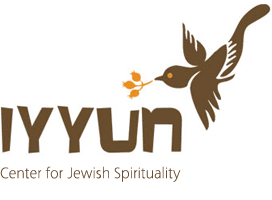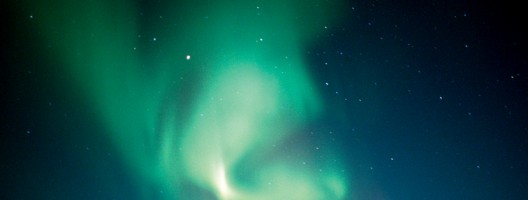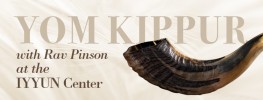Lights seem to speak to us in a very deep way, particularly those gentle lights that dance atop of candles. There are few visuals that are as warming to us as the sight of a burning flame, a pure simple flame luminous and ethereal.
To the mind, lights and festivities also seem to go together. Lights are deemed the perfect vehicle to express joy—a firework display at a festive occasion is but one example, as is the lighting of candles or the hanging of colorful bulbs at a birthday party or any other joyful event.
Within a Jewish context, every Shabbat, holiday or other special occasion demands the lighting of the candles. As the day is about to begin, at the moment immediately preceeding the beginning of the auspicious and dedicated day, the tradition is to light a candle. More precisely, the Shabbat candles are lit for the purpose of kavod – honor, to pay tribute to the day, and also for the purpose of oneg – pleasure, so that we eat our Shabbat meal in the pleasing glow of light and not stumble in the darkness. On Yom Tov, we have the additional advantage of it being a day of simcha, a day of joy.
The oddity of all of this is that the candles of Chanukah are not meant to be used for our personal pleasure whatsoever. It’s quite clearly stated that one may only gaze at the lights and not use them for any other purpose. In fact, another light or candle must be lit to ensure that the room is lit even without the light of the Menorah.
The intensity of these lights are not meant to be a channel for something else, no matter how lofty that purpose may be. They are not intended as a means, but are there as an end unto themselves.
“The soul of man is a lamp of G-d” (Proverbs 20:27). The soul is our higher self. Our soul is the self of our potential and possibility, the part of us that stands above ego, selfishness, aggression and resentment. The soul is the background of our being, the light that masters our thoughts, emotions and actions, and essentially the whole of life. It is not something we posses, rather it is who we are, it does not belong to us, it is us.
And yet we have the ability to eclipse the light of our soul, and use its reverberating power to destroy and wreck havoc. Light can be warming and bring comfort, but it can also be the source of much destruction and devastation. We can harness our internal light to bring love and joy, but the converse is also true.
Thirty six, the mystical and mysterious number, is the amount of times the word light appears throughout the Torah. After the incident in the Garden of Eden, God asks Adam “ayeka?” (where are you?), not merely to be polite, and show the way we should enter a conversation. The question is essentially, “where are you?” What have you done? It is a question that has been asked and re-asked of every one of us throughout time. The inner voice within challenging us once in a while and questioning, “Where are you?” What are your priorities? And what do you want out of life? Are you living up to your potential?
Midrashic sources write that the numeric value of the word ayeka is thirty-six. The question is then more pointedly: “where are you?” “What have you done with your light?” The Hebrew word sapir, as in the English derived term sapphire, refers to light, a stone of light. The word sipur – story is rooted in the word sapir. And so the question of ayeka is a question of, what is your story? What kind of tale are you weaving? Are you bringing warmth and joy, are you illuminating and bringing light, or have you forgotten your essentiality and are writing a story not worth repeating? This echoing sound of ayeka is a question, but more importantly a prodding, to be more, to live up to our potential.
These are the lights, our lights, that gently whisper to us to turn aside, refocus, and reengage our attention from the overwhelming bombardment of the everything and take notice of what is right here, who we are, and what we can be, allowing us to glimpse inwards to a place deep within us, and rediscover that which has always been there.
Chanukah is one of the most widely known and celebrated holidays of the year. It is festive, joyous, and family-oriented. It begins on the 24th of the Hebrew month of Kislev: a significant time of year—at least in the Northern Hemisphere—when the days are the shortest, and the climate the coldest.
In the summer months, people are generally more outgoing and in brighter moods. As the sunlight begins to decrease, people tend to become more introspective. The autumnal Hebrew month of Tishrei (occurring around September and October) is saturated with holy days such as Rosh Hashanah, Yom Kippur, and the festival of Sukkos. The next month, Cheshvan, has no holidays at all, and it is typically rainy and cold. This is when people are drawn further inward, and many desire to spend time alone. Kislev continues becoming darker and colder. People tend to retreat into their warm homes, and due to a subtle hibernation instinct in humans, we may actually sleep more than usual. Kislev culminates with the Winter Solstice, the longest night of the year. The following night is therefore minutely shorter—the first glimmer of light begins to re-awaken. At this season there’s a natural desire to join with family and friends and celebrate.
Every yom tov (Jewish holy day) has a natural, seasonal explanation, as well as a historical and spiritual story that gives rise to the celebration. When the Torah speaks of Pesach (Passover), for example, it defines the celebration as a commemoration of the story of the Exodus from Egypt. However, the Torah also says Pesach is to be celebrated in “the month of Aviv” (the first month of Spring), when harvesting begins. Thus, the content of the day—the narrative— is understood within a particular context, a specific season, with all its physical and psychological qualities. Before exploring the depths of the content of Chanukah, let’s first delve more into the context, and the intricate interconnection between Chanukah and its month and season.
Re-awakening Light
When the Talmud, in Tractate Shabbos, begins to discuss Chanukah, it first mentions the story: one small jug of oil, intended to burn for one night, lasted eight nights. Then it says, “On the following year they—our sages—established these days as holy days for singing praise and offering thanks.” In other words, the sages didn’t celebrate the miracles of Chanukah right away. Only when the season came around again, did they perceive the nature of the previous year’s events. They sensed that the energies of these miracles were ‘established’—the miracles re-manifested, in a spiritual way, on the same dates of a following year. By confirming the fact of this reappearance, our sages empowered us also to tap into the miraculous energy of Chanukah that appears each year.
Why do we celebrate the miracles of Chanukah and not other miracles? Why is there no holiday commemorating the manna or the miraculous well of Miriam? The answer is, we only celebrate past events when they can be re-experienced in the present.
It would seem that the annual re-appearance of the miraculous energy of Chanukah is due simply to the cyclical patterns of time—there are certain patterns that rotate and return each year at the same time. However, in Jewish spirituality, we sense a linear movement of time as well. Time is always progressing forward towards a spiritual culmination. Therefore, unlike the natural patterns of the year, the energies of Chanukah progress toward a culmination, revealing something completely new each year. This linear movement joins the cyclical movement of nature to form an upward-spiraling, reawakening, ever-new light of Chanukah.
The Name of the Month – Trust and Hope
Kislev is the ninth month of the year, counting from Nissan. In the Torah we find that the root of the word Kislev means ‘trust’ and ‘hope’: “Did I place my kili (my hope) in gold…?” (Job, 31:24) “…And they placed in Hashem their kislam (their trust).” (Psalms, 78:7)
Kislev therefore illustrates the issue of trust. When you make an appointment to meet someone, and they haven’t yet arrived, you can’t see them or know for certain that they’ll arrive on time. You can only see or envision their arrival by means of trust. When our days are dark and cold, we may not see the light and warmth of life clearly. Many people struggle with “seasonal affective disorder”, a form of depression attributed to the diminished sunlight of Winter. After the Winter Solstice, the glimmer of light that arrives really does spark in us a trust in a brighter future.
In terms of the historical narrative of Chanukah, the Hasmonians had tremendous bitachon to stand up to their Roman oppressors. Despite the darkness of their time, they trusted in the miraculous. This inspired them to look at a defiled Temple and envision its re-purification. Because of this trust, their eyes were open enough to find a small measure of oil with which to kindle the Menorah.
Writing some two hundred years after the re-dedication of the Temple, Josephus calls Chanukah “the Festival of Lights”. Although his historical accuracy is debatable, and he doesn’t even mention the miraculous oil, we can learn about Chanukah’s theme of trust and hope from his account: “Perhaps the reason (for the name “Festival of Lights”) is that a freedom beyond our hopes appeared to us, and so this was the name given to the festival.” (Antiquities VII:7)
The Letter of the Month
Every point in the calendar has a unique energy, symbology, and opportunity for growth. The ancient text, Sefer Yetzirah, teaches that the month of Kislev corresponds to the letter Samech, the astrological sign of Keshes or Sagittarius, and the rectification of “sleep”. What can we learn from these correspondences?
The letter Samech literally means ‘to support or uphold’. When people have a deep trust that they are supported, even if they fall into darkness, they are able to bounce back.
The Sign of the Month
Sagittarius is a centaur with a drawn bow. A drawn bow is similar to the above image of ‘bouncing back’. The arrow is drawn backwards, and great tension is created. The bowsman trusts, however, that the deeper the arrow regresses, the further it will fly when released.
The Sense of the Month
Sleep, also, involves ‘descending’ into unconsciousness and vulnerability. An environment that is not trustworthy may keep a person from falling asleep. We tend to sleep only when we can trust that we will awaken.
When Sefer Yetzirah mentions “sleep”, it categorizes it as one of several chushim, ‘senses’–as in the senses of smell and sight. What does this mean? Some people have a chush—a refined ‘sense’ or taste for the art of sleeping. In contrast, others have a utilitarian relationship with sleep; they sleep because they’re tired or they seek an escape from the waking state. A ‘gourmet’ sleeper has deeper trust in Divine support, as the Book of Mishlei says, “If you rest, you will not worry; you will lie down and your sleep will be pleasant…, for you will trust Hashem.” (Mishlei 2)
When we lack trust, our minds are filled with self-centered worries, doubts, and the unfinished business of the day. This prevents deep, pleasant rest, and we may not ‘bounce back’ or awaken with energy for the next day. Therefore, to rectify the ‘sense’ of sleep, to make our sleep more G-d-centered and “pleasant”, we must refine our faculty of trust.
Prophetic Visions of Chanukah
A few hundred years before the Chanukah story, the First Temple fell and Jewish sovereignty was stripped from the Land of Israel. One 24th of Kislev during this dark time, the prophet Chagai spoke to his broken People. His words inspired them to expect and envision the magnificent rebuilding of the Temple. Chagai spoke to the priests of the laws of purity–a prophetic hint, perhaps, to the pure jug of oil that would be found in the future, on the same date. Despite the bleakness of Winter, and the trauma and opposition they had survived, the People were filled with so much Divine trust, that they immediately began to rebuild the Temple.
Another prophet of those difficult times, Zechariah, transmitted to the People an image of purity and grandeur: he prophesied about a menorah of pure gold, flowing continuously with holy oil. Thus, long before the Chanukah story, the menorah became a symbol of hope and light. Many centuries later too, the menorah became the symbol of the Jewish People, and a major theme in synagogue art and architecture.
A Primordial Chanukah
The Talmud (Avodah Zarah, 8a) tells of a celebration of light during the time of year that would later become Chanukah.
“When Adam—who was created in the beginning of the year, on the first day of Tishrei—noticed that during the first three months of his life, the days were getting gradually shorter, he said, ‘Woe is to me! Because I’ve sinned, the world around me is being darkened and is returning to its state of chaos and confusion; this must be the kind of death which has been sentenced to me from Heaven!’ He took upon himself to pray, fast, and look within. After eight days, he noticed the Winter Equinox (the Tekufas Teves, the season of the month of Teves), and saw that indeed the days were beginning to lengthen again. “So this is the way of the world!” he exclaimed, and he celebrated for eight days.”
The Darkest Night
The Winter Solstice generally occurs during the last week of Kislev. Therefore, not only does the week of Chanukah contain the longest night of the year, but at the end of a lunar month the nights have virtually no moonlight.
A student of the Baal Shem Tov named Rabbi Yakov Yosef determined, through complex calculations, that the night of the Chanukah victory and the re-lighting of the Menorah was precisely the longest night of the year. This deepest darkness sets the stage for the greatest possible revelation of light.
Divine Light
The light that comes from fire is dependent on the burning and destroying of something else. Divine light, however is self-derived. At the Burning Bush, Moshe encounters Divine light. It shines like a fire, and yet the bush is not consumed. This light doesn’t necessarily take away the darkness–it somehow shines within the darkness. This is the “Ohr HaGanuz”, the ‘Hidden Light’, the Divine light that burns within the darkness of Creation, yet doesn’t consume Creation. It is the light of Chanukah revealed in the darkest nights of the year and the darkest times of exile. Thus, the small jug of oil lit by the kohanim didn’t consume any oil.
When people are inspired they can rise to meet great challenges. These are times when the pure “oil” of a person’s soul shines brightly. Sadly, however, such peak experiences of inspiration wane, and most people return to the comfort of darkness.
The “miracle” of Chanukah was that the Jews were able to shine brightly for eight nights, extending beyond the natural cycle of a week. If Chanukah began on a Sunday, the last night was also Sunday again, and yet they were illumined as if it were the first night. The brilliance actually filled them throughout the whole year, and therefore they established that the inspiration and illumination of Chanukah would continue to manifest every year, for all generations. Every Chanukah is a special time for revealing the Hidden Light. Unlike all the Torah-based holidays, however, at the end of the Rabbinic holiday of Chanukah there is no havdalah, or ritual of separation. May we never separate from the timeless light of Chanukah. May it permeate every moment of our lives.
Chanukah is traditionally referred to as the festival of lights. Speaking of the laws of this holiday, the codifiers of Jewish law strongly suggest that we increase the giving of charity during these special days. Giving charity is always a commendable act, yet the relationship between these two, the festival of lights and the art of giving is quite profound, and intrinsically connected.
Light contains an amazing quality in that it brings warmth, comfort, and illumination, and yet, as much as it gives to others it retains its perfect wholeness; so long as a flame flickers it has the potential to kindle as many lights as possible without detracting from its own luminescence
We live in a physical tangible reality and therefore assume that by taking something of ours, or something that we believe belongs to us and giving it to another, we are in effect, reducing what we have. If you have ten dollars and you give one to the poor now you have only nine. But our reality is but a creation of a higher reality, one in which the laws of nature have no bearing. In this ‘true’ reality, charity is much like a flame. Offering what seems to be something of yours to others does not subtract from what is actually yours and what you possess; in fact the more you give the more you have, and the more you get.
There is a verse in the Torah that says, “Asser Te’asser” which literally means, “and you shall surely tithe.” Yet the Talmudic sages tell us; that the redundancy of this verse is intentional, asser – tithes so that you may tith’asser – become wealthy. By giving you get more in return, and the more you give the more you actually have.
“The soul of man is a lamp of G-d”, the wisest of all men, king Solomon tell us. The soul is our higher self, the part of us that is our potential. Our souls are the background of our being, not a property we posses, rather who we are, it does not belong to us, it is us.
When we open our hearts to others we tap into the essence of who we are, and our light is shared with others and the whole world to enjoy.









